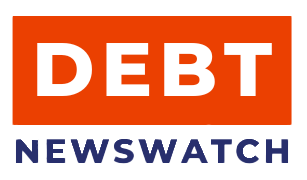Could You Lower Your Monthly Credit Payments?
Many Americans qualify for help but don’t know it. This quick check will walk you through your options—completely free and confidential.
Personal Finance & Debt Relief News
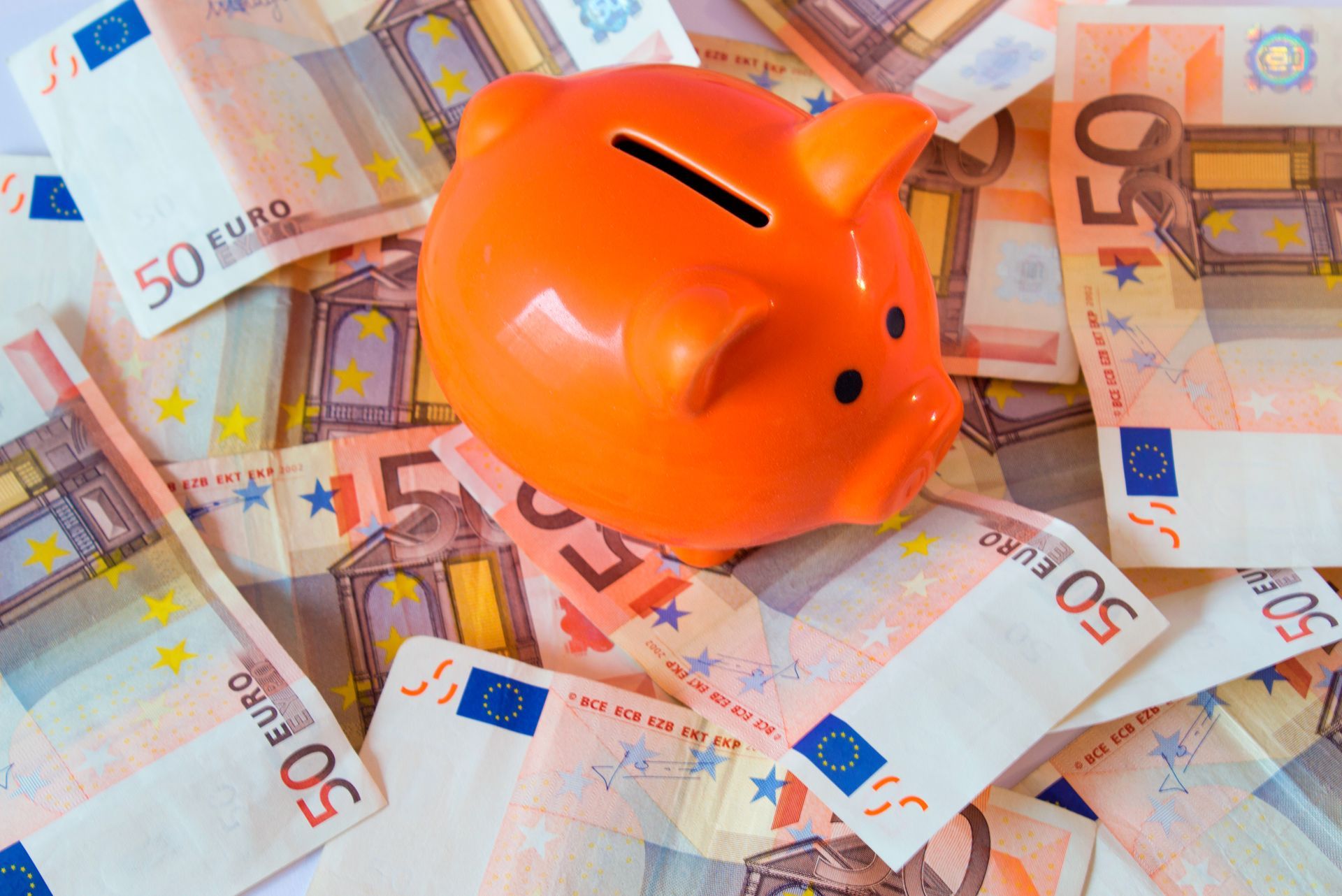
If you’re drowning in credit card debt, you’re not just overwhelmed—you might feel trapped. Month after month, you make the minimum payment, and somehow, the balance never seems to shrink. The truth? That’s exactly how the system is designed. What many people don’t realize is that credit card companies want you to stay in debt. It’s how they make billions each year—by collecting interest, late fees, and penalties from consumers trying to keep up. But here’s the good news: there are tools and programs available that can help reduce or even eliminate some of that debt —and credit card companies aren’t exactly advertising them. Why These Options Are Kept Quiet When you carry a balance, you’re not a liability to your credit card company—you’re a revenue stream. The longer you stay in debt, the more interest they collect. So while they’ll offer you a temporary APR discount here and there, they’re not about to hand you the keys to get out for good. That’s where independent debt relief tools come into play—resources created to support consumers, not creditors. “These aren’t hacks or gimmicks,” says Lisa Kim, a financial advisor who’s helped clients navigate out of debt. “They’re legitimate programs, often backed by nonprofits or authorized third-party organizations, designed to negotiate with creditors on your behalf.” The Tools You Should Know About If you’re serious about taking control of your credit card debt, here are a few options most companies hope you never hear about: 1. Hardship-Based Debt Relief Programs These programs work by negotiating directly with creditors to lower your total balance or reduce your monthly payments. They're not loans—you don’t borrow more money. Instead, you agree to a structured plan that may result in: > Lower monthly payments > Frozen or reduced interest rates > Stopping late fees or penalties > Reduced principal owed (in some cases) “I owed over $20,000 on five cards,” says Robert, a 36-year-old truck driver from Ohio. “I got into a hardship plan, and my payment dropped by $400 a month. I finally felt like I could breathe.” 2. Credit Counseling Services Many nonprofit organizations offer credit counseling for free or at a low cost. A counselor will look at your financial situation and recommend a Debt Management Plan (DMP) if appropriate. While not a quick fix, a DMP can: > Consolidate your payments into one monthly amount > Reduce interest rates through creditor agreements > Help you pay off debt in 3 to 5 years 3. Debt Settlement (For the Right Situation) If you’re seriously behind and your credit is already impacted, some companies specialize in negotiating lump-sum settlements—sometimes for less than what you owe. This option isn’t for everyone, and it can affect your credit short-term, but it’s a tool worth considering in extreme cases. What These Tools Have in Common The most effective relief programs share a few things: > They’re not widely advertised by your credit card issuer > They usually require some kind of financial hardship > They often involve working with a third party (nonprofit or certified specialist) They also share one powerful result: they help you take control again. Why People Don’t Use Them (And Why You Should) One word: stigma. Many Americans feel embarrassed about their debt or assume they don’t qualify for help. But that’s a myth. “These programs aren’t just for people who are unemployed or bankrupt,” says Kim. “They’re for anyone who’s trying but can’t seem to make progress.” Getting Started Is Easier Than You Think You don’t need to walk into an office or make a phone call to get help. Many debt relief organizations now offer simple, secure online tools that ask a few questions about your income, monthly payments, and total debt. From there, you can be matched with a personalized plan—or find out if you qualify for programs that reduce your payments. “I found out through a free quiz,” says Robert. “It took a minute, and I was matched with a counselor the same day.” Don’t Let Shame Keep You Stuck Debt is stressful—but staying silent about it is worse. You deserve to know all your options, even the ones credit card companies don’t talk about. If you’re ready to learn what’s out there, a short online quiz can help guide you to resources and tools that actually work. 👉 [Take the Free 60-Second Relief Quiz to See What You May Qualify For] You’re not broken. You’re not alone. And you have more power than you think.
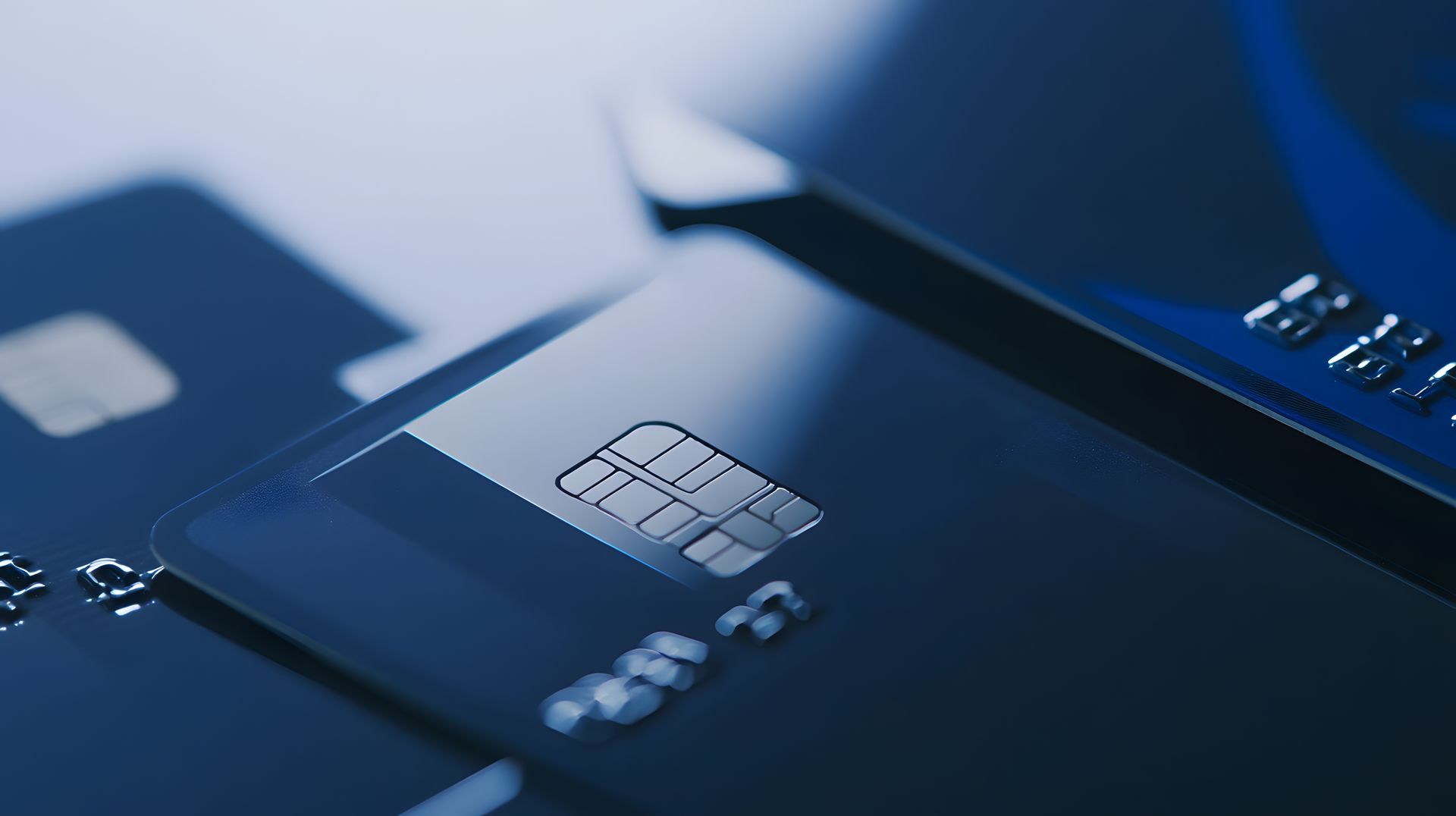
You check your credit card statement and there it is again—another shockingly high interest charge. This time, it’s even worse. You’re not imagining it: credit card interest rates have now surged to a 30-year high, topping an average of 22.9% in 2025. For millions of Americans already juggling high balances, this news lands like a gut punch. “I’m doing everything I can—cutting back, picking up extra shifts—but the debt just keeps growing,” says Jasmine, a 41-year-old single mom from Georgia. “Now with these rates? It feels impossible.” If you’re feeling the pressure, you’re not alone—and more importantly, you’re not powerless. Why Are Rates So High Right Now? In short: inflation and economic policy. Over the past few years, the Federal Reserve has increased interest rates in an attempt to slow inflation. While that may help curb rising prices on goods and services, it’s had a brutal side effect—pushing borrowing costs through the roof. Credit cards are among the first to feel that impact. Unlike fixed-rate loans, most credit cards have variable APRs, which means they’re directly tied to the Fed’s decisions. When the Fed raises rates, your card’s interest rate usually goes up shortly after. What Does This Mean for Your Wallet? If you carry a balance, the impact can be staggering. For example: > A $5,000 balance at 14% APR costs you around $58/month in interest > At 22.9%, that jumps to $95/month—almost $450 more per year, just in interest That extra cost doesn’t reduce your balance—it’s just money gone. And if you're only making minimum payments, it can stretch your repayment timeline by years. Step One: Stop the Bleeding The first thing to do when rates climb? Minimize how much you’re paying in interest. Here are three steps to consider: 1. Transfer Your Balance (If You Qualify) Some credit cards offer 0% APR balance transfer promotions for 12–18 months. If your credit score is decent, this can be a powerful way to pause interest and catch up on payments. “I moved $7,000 to a 0% card,” says Luis, a 29-year-old warehouse manager in Texas. “It bought me time to breathe and knock the balance down faster.” 2. Call Your Credit Card Issuer Yes, really. Call the number on the back of your card and ask if they can lower your APR. It doesn’t always work—but if you’ve been a good customer, they may offer a temporary reduction. 3. Cut Non-Essential Spending (Even Temporarily) Reevaluate monthly expenses. Cancel unused subscriptions. Delay big purchases. Even small shifts—$50 to $100/month—can make a big difference in reducing your balance. Step Two: Explore Relief Options You May Not Know About If you're overwhelmed, know that you have more than just traditional options. In fact, 2025 has seen a rise in hardship-based debt relief programs that many Americans still don’t know exist. These programs often allow eligible participants to: > Negotiate lower total balances > Pause or reduce interest rates > Consolidate into a single monthly payment They’re not loans, and they don’t require perfect credit. “I was skeptical at first,” says Jasmine. “But I filled out a free quiz that asked about my income and debt. A week later, I was enrolled in a plan that cut my payments by nearly half.” These programs aren't the right fit for everyone—but if you're stuck making only minimum payments, they might be a game-changer. Step Three: Shift Your Mindset from Survival to Strategy Getting out of debt isn’t just about numbers—it’s about momentum. Whether it’s using the snowball method (paying smallest balances first) or the avalanche method (tackling highest interest rates first), pick a plan that motivates you. > Snowball: Great for building confidence quickly > Avalanche: Better for saving money over time > Debt Relief Plan: Ideal for people feeling totally overwhelmed Track your progress each month. Celebrate small wins. And most importantly, don’t let shame stop you from taking action. A Simple First Step: Know Your Options With interest rates at record highs, taking action sooner rather than later can save you hundreds—or even thousands—over the next year. If you’re unsure where to start, a quick online quiz can help evaluate whether you qualify for any debt relief or consolidation options. It’s free, confidential, and doesn’t affect your credit score. 👉 [Take the Free Debt Relief Quiz to Explore Your Options] You don’t need to tackle everything today. Just take one step. The path forward starts with knowing you’re not stuck—and you’re definitely not alone.
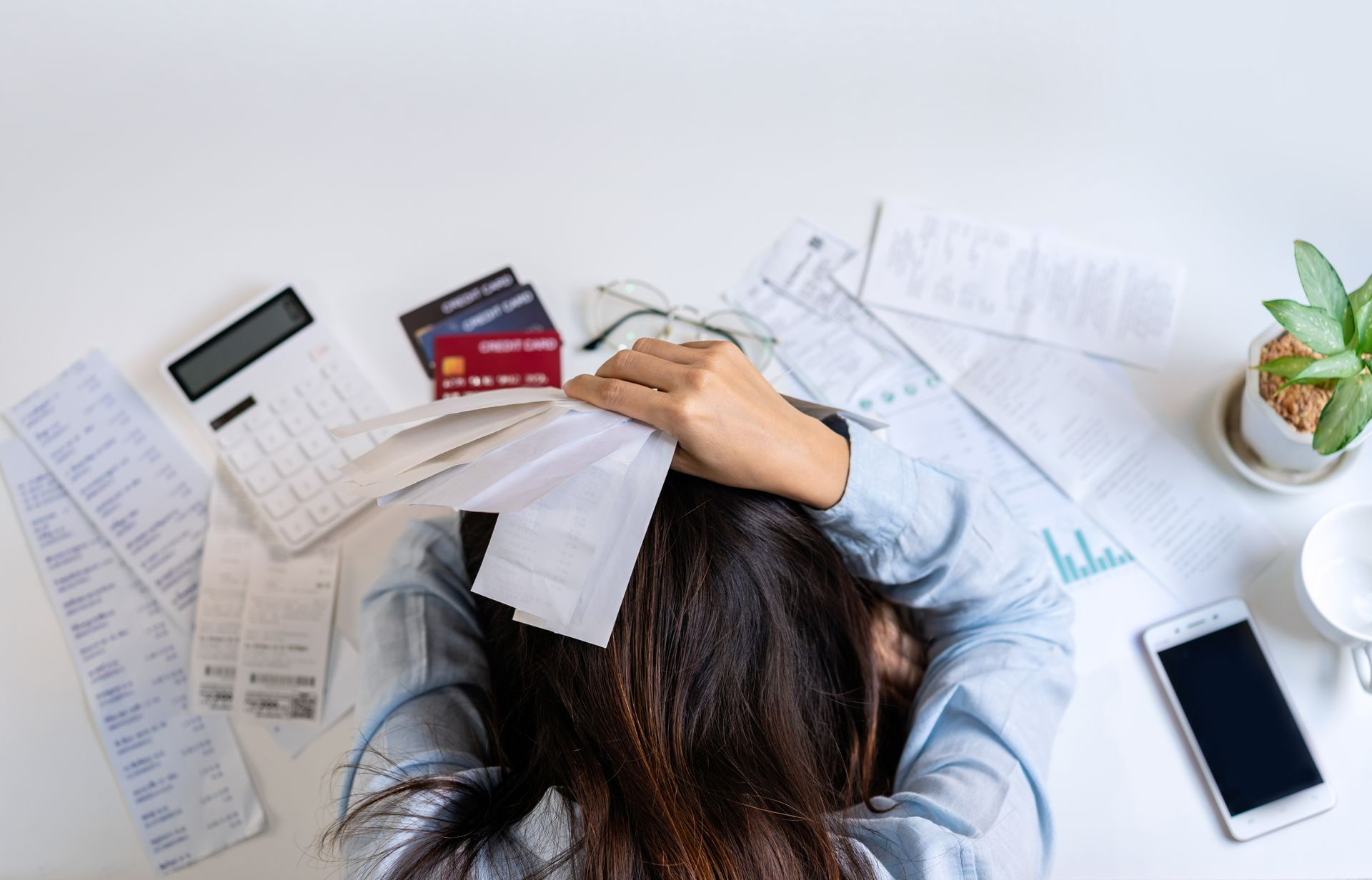
A Crisis in the Mailbox If you’ve ever opened your credit card statement and felt your stomach drop, you’re not alone. In 2025, the average American carries over $8,000 in credit card debt—a number that’s climbing faster than anyone expected. With interest rates reaching record highs and cost-of-living expenses outpacing wages, millions are struggling to stay afloat. “It feels like I’m just treading water,” says Michelle, a 34-year-old teacher from Ohio. “Every month I make payments, but my balance barely moves. It’s exhausting.” This growing financial strain has left many wondering: Is there a way out? Why Credit Card Debt Is Exploding in 2025 Several factors are fueling this surge. Post-pandemic inflation, rising housing costs, and increased reliance on “buy now, pay later” models have all played a part. But perhaps most troubling is the normalization of debt—many Americans now consider carrying a balance just part of life. “Credit card companies are offering high limits and aggressive rewards,” says Julia Price, a personal finance expert and author. “But those perks come at a cost—literally. Most people don’t realize how quickly interest can snowball.” Step One: Know Where You Stand Before you can make a plan, you need to know what you’re dealing with. That means looking at your statements and writing down: > Total balance on each card > Interest rate (APR) > Minimum monthly payment It’s not fun—but it's necessary. "Think of it like turning on the lights in a messy room,” says Price. “You can’t clean it up if you can’t see what’s there.” Step Two: Create a Payoff Strategy That Fits You There’s no one-size-fits-all when it comes to getting out of debt. The key is to find a method that matches your personality and financial habits. 1. The Snowball Method Pay off the smallest balance first while making minimum payments on others. Once that’s done, roll that payment into the next smallest balance. Best for: Those who need quick wins to stay motivated. 2. The Avalanche Method Pay off the card with the highest interest rate first. This saves the most money in the long run. Best for: Those who are more analytical and driven by numbers. 3. Debt Consolidation Combine all debts into one lower-interest loan or use a 0% balance transfer card (if your credit allows). Best for: People juggling multiple cards and struggling to keep up. Step Three: Get Help When You Need It Michelle, the teacher from Ohio, eventually took a debt relief quiz online that matched her with a program to reduce her payments. “I was skeptical,” she says. “But it was free and took two minutes. I didn’t realize I had options.” Debt relief programs aren’t for everyone, but for those who qualify, they can reduce total balances, freeze interest, or stretch out payments to make them more manageable. “It’s not about shame,” says Price. “It’s about finding a path forward.” Step Four: Protect Your Financial Future Getting out of debt is just one part of the puzzle. Staying out requires some guardrails: > Build an emergency fund, even if it’s just $500 to start. > Track your spending with a budgeting app or spreadsheet. > Use cash or debit for everyday purchases to avoid new debt. “Debt isn’t a moral failing,” says Price. “It’s a financial situation. And like any situation, it can change.” One Small Step Forward If you’re feeling overwhelmed, remember—you’re not alone, and you don’t have to figure it all out today. Sometimes, the best first step is just understanding your options. We’ve put together a short quiz that can help you explore possible solutions based on your personal situation. It’s free, anonymous, and takes less than two minutes. 👉 [Take the Free 60-Second Relief Quiz to See What You May Qualify For]
Advice & How-Tos
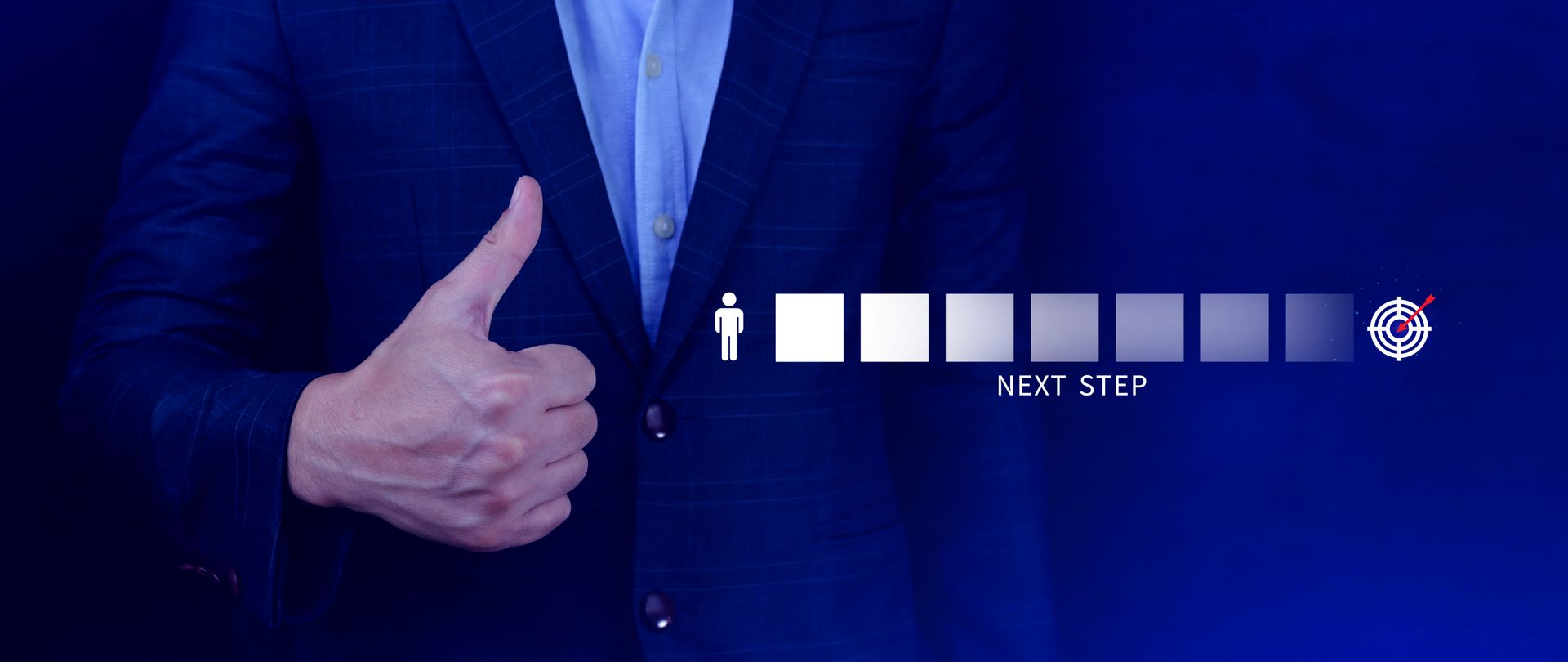
In today’s economy, it’s not uncommon to carry credit card debt—what’s become uncommon is the ability to pay it off quickly. With interest rates soaring to historic highs in 2025 and inflation continuing to squeeze budgets, many Americans are finding it harder than ever to make a dent in their balances. “It felt like I was on a treadmill,” says Marcus, a 39-year-old father of two from Pennsylvania. “Every month I paid a few hundred bucks, but my balance barely moved. I didn’t know what else to do.” If you’ve been feeling the same way, there’s good news: with the right plan—and a few smart moves—you can finally start making real progress. Here’s a step-by-step guide to getting out of credit card debt this year. Step 1: Face the Full Picture Before you can fix it, you need to know exactly what you're dealing with. That means listing: > Each credit card balance > The interest rate (APR) on each one > The minimum payment Use a simple spreadsheet or budgeting app. Total everything up. Yes, it might be uncomfortable—but it’s the foundation of your plan. “Seeing the numbers all in one place was hard,” says Marcus. “But it also gave me clarity—and motivation.” Step 2: Choose a Repayment Strategy That Works for You There are two proven ways to tackle multiple credit cards: > Snowball Method: Pay off the smallest balance first. Once it’s gone, roll that payment into the next one. Best for: People who need motivation and quick wins. Avalanche Method: Pay off the highest-interest card first to save the most money over time. Best for: Those who want to be as financially efficient as possible. Pick one. Stick to it. And track your progress each month. Step 3: Call Your Credit Card Company and Ask for a Rate Reduction Yes, this actually works—especially in 2025, as more lenders try to retain customers amidst rising rates. Just say something like: “I’ve been a loyal customer and have always paid on time. My current interest rate is really high—are there any promotions or lower APRs available?” Even a 3–5% reduction can save you hundreds over the course of a year. Step 4: Consider a Balance Transfer or Consolidation (If You Qualify) If you have decent credit, a 0% APR balance transfer card or personal debt consolidation loan can give you breathing room. Just be cautious: > Watch for transfer fees (usually 3–5%) > Make sure you can pay it off during the 0% window > Don’t rack up new charges on the old card “I got a balance transfer card and moved $6,000 to 0% for 15 months,” says Tanya, a 28-year-old teacher. “That window helped me pay off nearly the full balance without interest eating me alive.” Step 5: Build a Mini Emergency Fund It sounds backward—why save when you’re trying to pay off debt? But if you don’t have a small cushion (think $500 to $1,000), any unexpected expense will land you right back on your card. Stash what you can into a high-yield savings account. This way, you’re not relying on credit when life throws you a curveball. Step 6: Stop the Bleeding While you’re paying off your debt, avoid adding to it. That means: > Stop using your credit cards (hide or freeze them if needed) > Stick to a weekly cash or debit budget > Use apps to track spending and avoid “stealth” expenses like subscriptions The more you reduce your reliance on credit, the faster you’ll dig out of it. Step 7: Explore Debt Relief If You're Feeling Overwhelmed If your debt is unmanageable—say, you’re only making minimum payments, missing due dates, or falling behind—don’t tough it out alone. Hardship-based debt relief programs can: > Lower your monthly payments > Freeze or reduce interest rates > Even settle a portion of your balance These programs aren’t for everyone, but if your income can’t support your debt load, they’re worth exploring. “I filled out a free quiz and learned I qualified for a relief plan that lowered my payments by $300 a month,” Marcus says. “It gave me room to breathe.” The Path Out Starts with One Step Getting out of credit card debt in 2025 isn’t easy—but it is possible. Whether you’re consolidating, negotiating, or just chipping away one card at a time, what matters most is consistency. No matter where you are in your journey, the most important step is the one you take today. 👉 [Take the Free 60-Second Quiz to See What Debt Relief Options Might Work for You] Debt doesn’t define you. With a plan—and a little help—you can take back control.
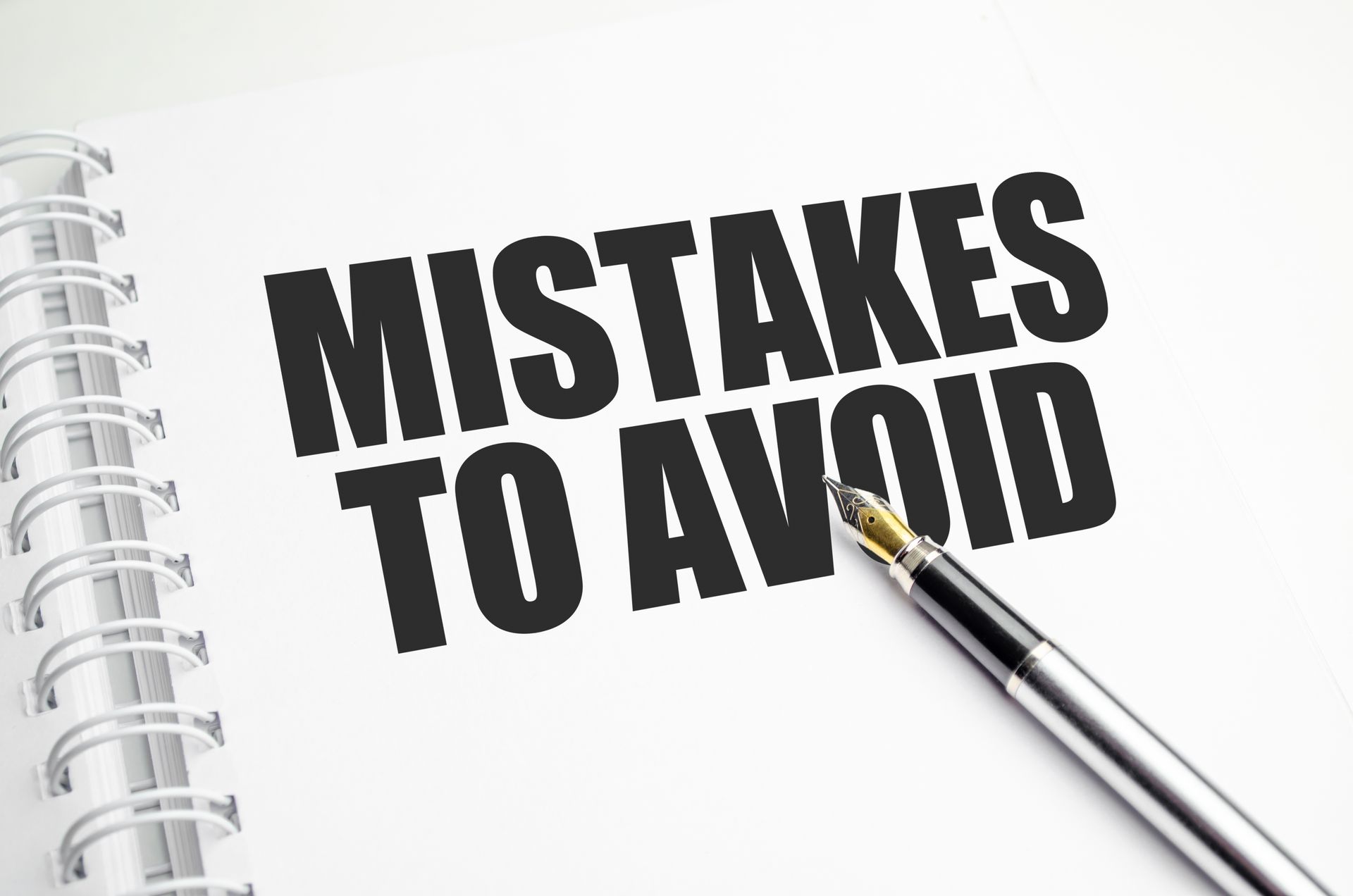
You set your budget, cut a few expenses, and make a solid payment on your credit card. But then life happens—a surprise bill, a forgotten subscription, or just the pull of daily expenses. Before you know it, you're back to square one. If this sounds familiar, you're not alone. Paying off debt—especially high-interest credit card debt—isn’t just a numbers game. It’s emotional. It’s behavioral. And unfortunately, it’s easy to get stuck in patterns that do more harm than good. “I kept throwing money at my debt but wasn’t getting anywhere,” says Lauren, a 33-year-old graphic designer from Nevada. “Once I realized I was making a few key mistakes, things finally started to shift.” Here are the top 10 mistakes people make when trying to pay down debt—and how you can avoid them. 1. Only Paying the Minimum Minimum payments might keep you in good standing with your lender, but they won’t get you out of debt anytime soon. In fact, they’re designed to keep you paying interest for years. Fix it: Always pay more than the minimum, even if it’s just $25 or $50. Every little bit chips away at the principal. 2. Ignoring the Interest Rates Many people treat all debt equally—but not all debt is created equal. A 24% credit card should be handled much differently than a 4% student loan. Fix it: Use the avalanche method: pay off the highest-interest debt first to save money over time. 3. Not Tracking Your Spending It’s hard to fix what you don’t measure. Without a clear picture of where your money is going, it's easy to overspend or miss opportunities to save. Fix it: Use a free budgeting app or spreadsheet to track every dollar. Awareness is the first step to change. 4. Trying to Pay Off Everything at Once Spreading your money across too many debts at once can leave you feeling burned out and seeing little progress. Fix it: Focus on one debt at a time using the snowball method—start with the smallest balance, and build momentum. 5. Continuing to Use Credit Cards While Paying Them Down It’s a classic trap: making a payment only to charge the card back up. The balance stays the same—and the cycle continues. Fix it: Freeze your credit card (literally, in water if needed). Switch to debit or cash while paying off balances. 6. Not Having an Emergency Fund It seems counterintuitive—shouldn’t all your money go toward debt? But without an emergency cushion, one surprise expense can send you right back into debt. Fix it: Aim to save $500–$1,000 for emergencies while still chipping away at your debt. 7. Falling for “Quick Fix” Scams In 2025, ads promising “instant debt forgiveness” are everywhere. But many of them are shady operations that charge upfront fees or damage your credit. Fix it: Always research any debt help service. Look for nonprofit credit counseling agencies or programs vetted by government or consumer protection groups. 8. Not Asking for Help Too many people suffer in silence, thinking they have to figure it all out on their own. But help exists—and sometimes, a fresh perspective is all you need. Fix it: Talk to a financial coach or counselor. Many offer free consultations to help you build a realistic plan. 9. Consolidating Without a Plan Debt consolidation can help—but only if you stop accumulating new debt. Otherwise, you’re just shifting balances around. Fix it: Only consolidate if you’re committed to a budget and ready to stop using your credit cards. 10. Letting Shame Hold You Back Debt can feel personal. Embarrassing. Like a secret you don’t want to admit. But shame keeps people from taking action—and makes things worse over time. Fix it: Remind yourself that debt is a financial situation, not a moral failure. You’re not alone, and help is out there. Final Thoughts: You’re Closer Than You Think No one gets everything right the first time. If you've made some of these mistakes, don’t beat yourself up. The important thing is recognizing them—and making small changes that move you forward. Lauren, the designer from Nevada, puts it best: “Once I stopped trying to do it all at once and focused on just doing it better, I finally saw real progress.” If you’re unsure where to start or want to see what options might be available to help you out of the cycle, a quick quiz can help guide you to the next step. 👉 [Take the Free 60-Second Quiz to Explore Your Debt Relief Options] Progress starts with understanding—and one smart move at a time.
It’s a feeling most of us know too well—you make a decent-sized payment on your credit card, only to find that the majority of it went to interest. It’s like throwing water on a fire that never goes out. With credit card interest rates hitting record highs in 2025, more and more Americans are asking the same question: Is there anything I can do about this? The answer: Yes. In fact, you can often negotiate your credit card interest rate—and it’s easier than you might think. “I thought it was just the rate they gave me and that was it,” says Melissa, a 30-year-old nurse from Tennessee. “But then I called, asked politely, and they dropped it from 22% to 16%. Just like that.” Why Would a Credit Card Company Lower Your Rate? Credit card companies are in the business of making money—but they also want to keep customers. If you’ve got a solid history of on-time payments, a decent credit score, or you're carrying a large balance, you may be more valuable to them than they let on. “Your lender doesn’t want to lose you to a competitor,” explains Sarah Keene, a certified financial counselor. “If you mention looking at other offers or express that the interest rate is becoming a burden, many companies are willing to negotiate—especially if you’re a longtime customer.” Step-by-Step: How to Ask for a Lower Interest Rate 1. Do Your Homework Before you make the call, pull together a few key pieces of information: > Your current interest rate > How long you’ve been a customer > Your payment history > Competing offers (especially 0% balance transfer cards) Knowing what you’re working with gives you confidence—and leverage. 2. Make the Call Dial the number on the back of your credit card. When you reach a customer service rep, say something like: “Hi, I’ve been a customer for [X] years and have made my payments on time. I’ve noticed that my current APR is [X%], and I’ve seen offers from other companies for lower rates. Is there any way to lower my interest rate?” It’s simple, polite, and to the point. 3. Be Ready to Push Back (Gently) If the first rep says no, ask to speak to a supervisor or inquire if there are any promotional rate programs available for loyal customers. Sometimes, just showing that you’re informed and proactive is enough to get them to reconsider. “I was told ‘no’ at first,” Melissa says. “But then I said, ‘Are you sure? I’m seeing 0% transfer offers from competitors.’ The rep put me on hold and came back with a 4% reduction.” What If They Still Say No? Not every company will budge—but you still have options: Balance transfer cards: Many offer 0% APR for 12–18 months on transferred balances (note: watch for transfer fees). Debt consolidation loans: These can offer lower fixed interest rates and simplify multiple payments into one. Debt relief programs: If you’re overwhelmed and behind on payments, you might qualify for hardship-based programs that negotiate lower payments or freeze interest. A Real-Life Example Greg, a 45-year-old retail manager from Michigan, had over $12,000 across three cards, all with interest rates over 20%. “It was eating up my paycheck,” he says. After negotiating, two of his cards reduced his rates by 5% and one offered a temporary 0% promo for six months. “That phone call saved me over $1,000 in interest in the first year alone,” he says. “I only wish I’d done it sooner.” Tips for a Successful Negotiation > Be polite but assertive: You’re more likely to get help if you’re respectful. > Highlight your loyalty: Emphasize how long you’ve been a customer and your payment history. > Mention other offers: This shows you’ve done your homework—and that you have options. > Don’t accept the first “no”: Often, the first response is just a script. Keep pressing—nicely. The Bottom Line Credit card companies won’t offer to lower your interest rate—you have to ask. But if you do, and you come prepared, you might be surprised at how often the answer is yes. Even a few percentage points can make a huge difference in how quickly you can pay off your debt—and how much interest you save in the long run. If you're feeling stuck and unsure what strategy is best for your situation, there’s a quick, free quiz that can help you assess your options—from negotiation to debt relief. 👉 [Take the Free 60-Second Relief Quiz to See What You May Qualify For] You’ve got more control than you think. Sometimes, all it takes is a phone call—and a little courage—to start turning things around.
Personal Stories & Testimonials

For most of us, the struggle with credit card debt doesn’t come from a big shopping spree—it comes from trying to keep life afloat. For Jasmine Carter, a 36-year-old single mom of two from Ohio, that’s exactly how it started. “I was working full-time, budgeting carefully, doing all the ‘right’ things,” she recalls. “But somehow, my credit cards just kept filling up.” Between unexpected car repairs, rising grocery prices, and school expenses for her kids, Jasmine’s balance slowly crept past $12,000. And with interest rates pushing 25% in 2025, the minimum payments were barely covering the interest. “I was doing everything I could just to stay afloat,” she says. “But it felt like I was drowning.” If Jasmine’s story feels familiar, you’re not alone. And, like Jasmine, you can find a way out. The Turning Point: Admitting It Was Time for Help For months, Jasmine kept trying to manage it on her own. She used budgeting apps, clipped coupons, and picked up side gigs on weekends. But even with all that, the debt didn’t budge. “I felt like a failure,” she admits. “It’s hard to ask for help, especially when you’re supposed to be holding it all together.” Her turning point came when she read an article (much like this one) that mentioned a free 60-second quiz to explore debt relief options. Skeptical but curious, she gave it a try. “It didn’t ask for anything too personal—just basic info about my debt, income, and how I’d been managing it,” she says. Within minutes, Jasmine received a summary of options she might qualify for, including a hardship-based debt relief program that could reduce her payments and freeze interest. What the Program Looked Like After taking the quiz, Jasmine spoke with a certified debt relief specialist. “I expected a sales pitch, but it wasn’t like that,” she says. “It was more like talking to a financial counselor.” Here’s what they offered her: > A consolidated monthly payment (about 40% less than she was paying before) > Frozen interest on her enrolled debts > A clear plan to become debt-free in 3–4 years It wasn’t a loan, and it didn’t require perfect credit. It was simply a structured way to repay her debt based on her real-life budget. Jasmine enrolled the same week. Life After Enrollment: Stability, Not Perfection Jasmine still works hard—she still budgets and saves where she can—but now, her debt doesn’t feel like a ticking time bomb. “The first month I made that lower payment, I cried,” she says. “Not because of the debt—but because I finally had hope.” She tracks her progress every month and has already paid off nearly 30% of her enrolled balance. The phone calls from collectors stopped. The stress eased. And most importantly, she feels in control again. “I used to lie awake worrying about my kids’ future,” Jasmine says. “Now I feel like I can actually build one.” What You Can Learn from Jasmine’s Journey Jasmine’s story isn’t just inspiring—it’s relatable. Here’s what you can take away from her experience: 1. You don’t have to do it alone. Whether you’re a single parent or just trying to keep up, there’s no shame in needing help. 2. Free tools exist for a reason. The right quiz or resource can connect you with legitimate solutions. 3. You can still take care of your family and tackle debt. It’s not either/or—you just need the right plan. 4. Progress is powerful. Even small wins each month can shift your mindset from fear to confidence. Ready to Take the First Step? Like Jasmine, you might be hesitant. That’s normal. But starting doesn’t mean you’re giving up—it means you’re finally giving yourself a real shot at peace of mind. If you’re curious about whether you qualify for a debt relief plan like Jasmine’s, a short, free quiz can help you explore your options. It’s confidential, takes just a minute, and doesn’t impact your credit score. 👉 [Take the Free 60-Second Quiz to See What Debt Relief Options You May Qualify For] Being in debt doesn’t mean you’ve failed. Asking for help means you’re ready to rise—and Jasmine’s proof that it’s possible.

If you’ve ever felt like your credit card debt is a shadow that follows you everywhere, you’re not alone. In 2025, with interest rates at a 30-year high and everyday expenses stretching budgets thin, more Americans than ever are carrying balances they can’t seem to shake. But here's the part we don’t hear enough about: people are breaking free. Quietly, consistently—and often with a lot of grit and some surprising tools—everyday folks are clawing their way out of debt and reclaiming their financial freedom. Here are three real stories of Americans who went from maxed out to debt-free—and what you can learn from their journeys. Erica’s Story: The Snowball That Gained Speed Debt at its worst: $19,200 across five credit cards Timeline to debt-free: 14 months Erica, a 34-year-old office manager in Michigan, didn’t think of herself as irresponsible with money. But between medical bills, moving expenses, and everyday costs of raising two kids, her credit cards slowly filled up. By the end of 2023, she was paying nearly $600 a month just in minimum payments—and getting nowhere. “I wasn’t missing payments,” Erica says. “But I was stuck. The balances just weren’t going down.” After reading a blog post about the snowball method, she got serious. She listed her debts from smallest to largest and started attacking the smallest one first, while continuing to make minimum payments on the rest. “I needed quick wins,” she explains. “Paying off that first $1,000 card gave me the boost to keep going.” She also canceled two streaming services, paused online shopping, and picked up a Saturday gig as a grocery delivery driver. Every extra dollar went toward the next card on her list. In just over a year, Erica made her final payment. “Now, when I log in and see a zero balance, it feels surreal.” Jamal’s Story: From Financial Fog to Clear Vision Debt at its worst: $12,500 in revolving balances Timeline to debt-free: 10 months Jamal, a 29-year-old freelance photographer from Georgia, didn’t even realize how much debt he had until he forced himself to total it up one night. “I was paying everything off in pieces, never late, but I had no idea what the big picture looked like,” he says. The shock motivated him to take action. He took a free debt relief quiz he found online, which connected him with a hardship-based repayment plan that froze his interest and bundled his payments into one. “I was paying $400 a month across four cards,” he says. “After the plan, it dropped to $275. That gave me breathing room.” By automating his payments and sticking to a strict budget for 10 months, Jamal hit zero. His advice to others? “Don’t wait until you’re desperate. Just being honest with yourself and asking for help makes all the difference.” Priya’s Story: Turning a Setback into a Comeback Debt at its worst: $16,000 post-layoff Timeline to debt-free: 18 months In early 2023, Priya, a 42-year-old marketing specialist from California, was laid off unexpectedly. With her emergency fund drained by month three, she leaned on credit cards to cover essentials—groceries, rent, utilities. “I hated it,” she says. “But I didn’t have a choice.” Once she got a new job six months later, she was staring down $16,000 in debt with three cards maxed out. That’s when she reached out to a nonprofit credit counseling service, which helped her set up a structured debt management plan. “My counselor didn’t judge me,” Priya says. “She walked me through everything, helped negotiate lower interest rates, and gave me a plan I could stick to.” It wasn’t always easy. She skipped vacations, cooked every meal at home, and resisted impulse spending. But with steady effort, she paid off her last balance in early 2025. What These Stories Have in Common > Each story is different—but the common threads are clear: > They got honest about how much they owed > They asked for help , whether through a quiz, a coach, or a relief program > They committed to a plan that worked for their lifestyle > They made progress one month, one payment at a time These aren’t celebrities or influencers. They’re everyday people who decided they were done living under the weight of debt—and took the first step toward freedom. Your Story Could Be Next If you’re feeling overwhelmed by credit card debt, know this: you're not alone, and it’s not too late to turn things around. Whether you try a debt strategy like snowball or avalanche, explore consolidation, or look into a relief program, the key is to start. One simple way to begin? Take a short quiz that helps match you with debt relief options based on your situation. It’s free, confidential, and doesn’t impact your credit score. 👉 [Take the Free 60-Second Quiz to Explore Your Debt Relief Options] Debt doesn’t define who you are. But taking action? That can redefine your future.

I always thought I was “good with money.” I paid my bills on time, kept a close eye on my bank balance, and avoided flashy purchases. But somehow, by the start of 2024, I had over $13,000 in credit card debt—and no clue how to climb out. It wasn’t one big expense that got me there. It was everyday life: groceries, gas, unexpected car repairs, a few too many delivery meals when I was too exhausted to cook. It all added up. And with interest rates hitting record highs in 2025, my monthly payments were barely covering the finance charges. “I’m never going to get ahead,” I told myself more than once. That sense of helplessness? It’s suffocating. But everything changed when I stumbled across a simple, free quiz—something I almost ignored. Finding the Quiz (And Taking It Seriously) One evening while scrolling through my phone, I saw a link in an article that said: “Take this free 60-second quiz to see what debt relief options you might qualify for.” At first, I rolled my eyes. Another quiz? What could it possibly tell me that I didn’t already know? But something about the way it was phrased—no pressure, no commitment—convinced me to try. I figured I had nothing to lose. The quiz asked about: > How much credit card debt I had > Whether I was current on my payments > My income and employment status > If I’d experienced any recent financial hardship It was quick. I didn’t have to enter my Social Security number or credit card info. Just the basics. When I got my results, I was surprised: I qualified for a hardship-based debt relief program that could reduce my monthly payments and possibly even lower the total amount I owed. I didn’t even know those programs existed. Talking to a Specialist—Without the Sales Pitch The next step was talking to a certified debt relief specialist. I was nervous—it felt like admitting failure. But to my surprise, the conversation wasn’t judgmental. There was no pushy sales pitch. Just someone on the other end of the phone who explained things clearly and calmly. They walked me through my options, based on my income and how much I owed. Here’s what I learned: > I could consolidate my debt into one monthly payment > My interest rates could be frozen (or significantly lowered) > My creditors might be willing to settle for less than the full amount And most importantly: this wasn’t a loan. I wouldn’t be taking on more debt—I’d just be restructuring what I already owed. What Changed After I Said Yes I enrolled in the program two weeks later. > My five credit cards were combined into a single monthly payment > My interest stopped piling up > The collection calls disappeared > I could finally see an end in sight It wasn’t an overnight fix. I still had to be disciplined and stick to the plan. But for the first time in years, I felt like I had control over my money instead of the other way around. How It Impacted More Than Just My Finances The difference wasn’t just financial—it was emotional. Before, I carried this constant background stress. Every time I used my card, every time I checked my email, every time the phone rang, I felt anxiety. After joining the program, that pressure started to ease. “I didn’t realize how much mental energy debt was stealing from me until it was gone,” I told a friend recently. And it’s true. What I’d Tell Anyone in a Similar Situation If you’re feeling stuck, ashamed, or just exhausted from trying to juggle credit card payments—I see you. And I want you to know: help exists, and it’s often just a few clicks away. That quiz might seem like a small thing. But for me, it was the turning point. It led me to a solution I didn’t know I was allowed to have. You don’t need to wait until things are “bad enough.” If you feel like debt is keeping you from living the life you want, it’s time to explore your options. Want to Take the First Step? The quiz I took is still available—and it’s still free. It doesn’t impact your credit score and doesn’t require you to commit to anything. But it might open the door to the help you need. 👉 [Take the Free 60-Second Quiz to Explore Your Debt Relief Options] Sometimes the hardest part is just starting. But once you do, things can change faster than you think.
Education & Awareness

If you’ve been searching for ways to get out of credit card debt, chances are you’ve come across ads for debt relief services promising lower monthly payments, reduced balances, or even debt forgiveness. And if you’re like most people, your first reaction is probably some version of: “This sounds too good to be true.” And you know what? That’s a fair response. In 2025, with consumer debt hitting all-time highs, the debt relief industry is booming—and so are the scams. But not all debt relief services are shady. Some are legit, effective, and even life-changing for the right people. The key is knowing how to tell the difference. What Is a Debt Relief Service, Anyway? Debt relief services are companies or nonprofit organizations that help consumers reduce, manage, or settle their debt. These services can include: Debt settlement: Negotiating with creditors to pay less than the full amount owed Debt management plans (DMPs): Working with nonprofit credit counselors to create a structured, affordable repayment plan Debt consolidation: Helping you combine multiple debts into one lower-interest loan (often through a partner lender) Hardship programs: Assisting you in enrolling in special hardship-based repayment programs with your creditors Each of these paths can be legitimate—but they’re not one-size-fits-all. Signs of a Legitimate Debt Relief Service Here’s how to spot a company you can trust: ✅ 1. They’re transparent about fees Reputable services will clearly explain any fees before you commit. In fact, for debt settlement companies, it's illegal to charge upfront fees before settling your debt under FTC rules. ✅ 2. They don’t promise the impossible Be wary of anyone guaranteeing they can make your debt “disappear” or eliminate it overnight. Legitimate providers offer options, not magic wands. ✅ 3. They walk you through all your choices A trustworthy organization will take time to explain multiple paths—like debt management, settlement, or consolidation—not push a single solution. ✅ 4. They don’t pressure you If a company uses scare tactics, urgent deadlines, or aggressive sales pitches, walk away. Real help doesn’t come with a countdown clock. ✅ 5. They have a proven track record Look for reviews, Better Business Bureau ratings, and accreditation from organizations like the NFCC (National Foundation for Credit Counseling). Red Flags to Watch Out For Not every service is on the up-and-up. Here are some warning signs that a “debt relief” offer might be a scam: > They ask for upfront payments before providing any services > They guarantee your creditors will forgive your debt or stop all collection calls > They claim their program has no effect on your credit—which isn’t always true, especially with debt settlement > They push you to sign up immediately without reviewing your full financial situation > They avoid providing written documentation or contracts Real Stories: What It Looks Like When It Works Danielle, 41, California: “I was $16,000 deep in credit card debt after a divorce. I found a nonprofit credit counseling agency that enrolled me in a debt management plan. My payments went from $720/month to $450, and they negotiated lower interest rates. It took three years, but I paid off every dollar.” Miguel, 35, Florida: “After losing my job during a medical leave, I fell behind on three credit cards. I took a free quiz and ended up enrolling in a hardship program. My creditors agreed to freeze interest for a year while I got back on my feet. It saved me from bankruptcy.” These aren’t fairy tales—they’re real stories of what can happen when you work with the right type of service. How to Protect Yourself—and Get the Help You Need If you’re considering a debt relief service, take these steps first: > Do your homework. Google the company. Check their BBB rating. Look for complaints or red flags. > Ask the right questions. What services do they offer? Are there fees? Will it impact your credit? > Start with a quiz or consultation. Many legitimate providers offer free assessments to help you figure out which option might work best. Final Thoughts: Help Is Out There—You Just Have to Find the Right Fit The world of debt relief can feel confusing, and yes, even risky. But for the right person, working with a reputable service can be the first real step toward financial freedom. If you're feeling stuck, overwhelmed, or unsure where to start, a short quiz can help guide you toward solutions tailored to your situation—without pressure or commitments. 👉 [Take the Free 60-Second Quiz to See What Debt Relief Options You May Qualify For] Debt relief isn’t a scam—but scammers are out there. Ask questions, trust your gut, and don’t be afraid to seek help. The right support can make all the difference.

You make your payments every month. You cut back on extras, maybe even picked up a side hustle. But somehow, the credit card balance still feels like a mountain that won’t budge. The math says you should be making progress, so why does it feel like you’re stuck? The answer might not just be in your wallet—it could be in your mind. In 2025, as millions of Americans face rising interest rates and cost-of-living pressures, debt isn’t just a financial issue. It’s a psychological one. Understanding how your brain reacts to debt can help you finally break free from it—and stay motivated along the way. Why Debt Feels So Overwhelming Debt triggers a powerful emotional response. It’s not just about owing money—it’s about feeling out of control. That leads to stress, shame, avoidance, and even decision fatigue. “I knew I had debt,” says Sam, a 29-year-old software support agent from Phoenix. “But every time I thought about facing it, I felt paralyzed. Like the numbers were just too big.” Psychologists call this “debt stress,” and it’s real. Studies have shown that chronic debt can lead to anxiety, insomnia, depression, and even physical health problems. It’s no wonder so many people avoid dealing with it until it becomes urgent. 3 Psychological Traps That Keep You in Debt Understanding your brain’s behavior can help you break free. Here are a few traps many people fall into: 1. The Ostrich Effect (Avoidance) It’s easier to avoid looking at your bank account or credit card statements than face the uncomfortable truth. But avoiding your debt only gives it more power over your life. Fix it: Set a “money date” once a week to check your balances and progress. Make it routine—not emotional. 2. The Minimum Payment Mindset When you see the minimum due, it feels like “enough.” But paying just the minimum often means it could take years (or decades) to pay off your debt—and cost thousands in interest. Fix it: Even an extra $20–$50 a month can make a huge difference over time. Automate that little boost so you don’t feel the pain of parting with it. 3. All-or-Nothing Thinking If you can’t pay it all off at once, it doesn’t feel worth trying. This kind of thinking leads to discouragement and giving up before real progress happens. Fix it: Celebrate small wins. Every $100 paid down is a victory worth recognizing. How to Stay Motivated While Paying Down Debt The path to debt freedom can feel long—but it doesn’t have to be miserable. These strategies can help you stay focused and empowered. ✅ 1. Visualize Your Progress Use a debt payoff tracker, chart, or app to watch your numbers shrink. Seeing visual evidence of your progress helps your brain stay engaged. “I put a debt thermometer on my fridge,” Sam shares. “Coloring it in each month made it feel real—like I was winning.” ✅ 2. Name Your ‘Why’ Maybe it’s to stop fighting with your partner about money. Maybe it’s so you can save for a home or sleep better at night. Whatever it is, keep that reason front and center. Write it down. Post it where you’ll see it daily. ✅ 3. Use a Structured Payoff Strategy Pick a proven method—like the snowball (smallest debt first) or avalanche (highest interest first)—and stick to it. The structure keeps you focused and minimizes overwhelm. ✅ 4. Reward Yourself (Wisely) Give yourself non-financial rewards when you hit milestones—like a movie night at home, a hike, or a weekend break from side hustling. Celebrating keeps morale up. What to Do If You’re Feeling Stuck Sometimes, motivation alone isn’t enough—especially if your debt is unmanageable. If you’re only making minimum payments, falling behind, or feeling hopeless, you might benefit from a hardship-based debt relief program. These programs can: > Lower your monthly payments > Freeze or reduce interest > Help you regain a sense of control “I was embarrassed to ask for help,” Sam admits. “But when I took a short quiz and saw there were programs designed for people exactly like me, I felt hope for the first time in a long time.” It’s Not Just About the Numbers Paying off debt isn’t just about financial literacy—it’s about emotional resilience. It’s about confronting fear, changing habits, and believing that a different future is possible. You’re not lazy. You’re not a failure. You’re dealing with a system—and a psychology—that isn’t always built in your favor. But once you understand the why behind your debt, you can finally start rewriting your story. Ready to Take the First Step? If your debt feels overwhelming, a free 60-second quiz can help you see if there are options available—without judgment, and without impacting your credit score. 👉 [Take the Free Quiz to Explore Your Debt Relief Options] Debt doesn’t define who you are. With the right mindset, a clear plan, and a little support, you can take back control—one step at a time.
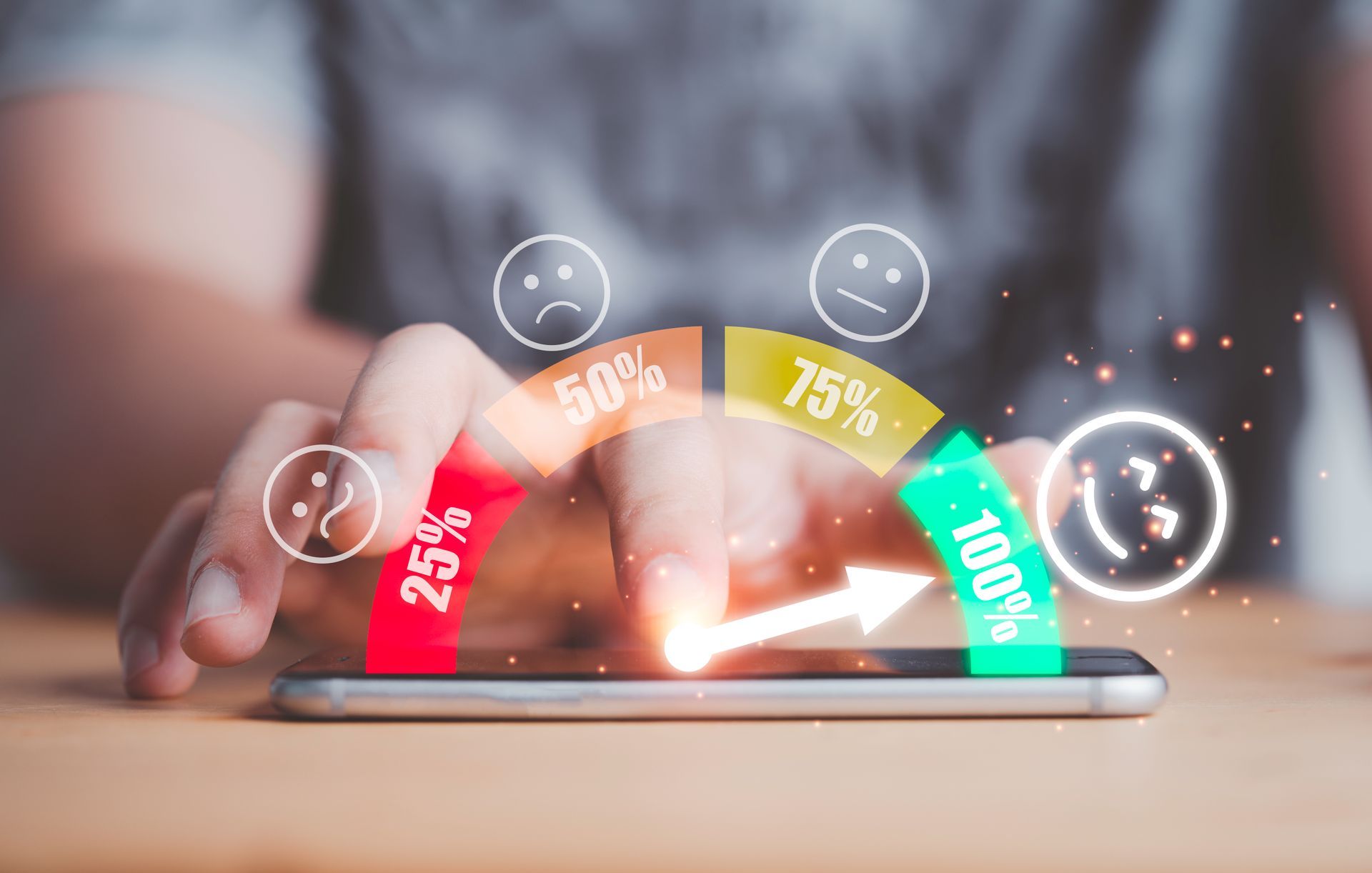
That’s the question Lisa, a 33-year-old dental assistant from Oregon, asked herself after checking her credit score in early 2025. She hadn’t missed a payment in years. She always paid more than the minimum. And yet—her score had slipped by nearly 40 points. The reason? Credit card debt. In today’s financial climate, even well-intentioned, responsible borrowers are struggling with rising balances and shrinking scores. And with interest rates still sky-high, it’s more important than ever to understand how credit card debt affects your credit—and what you can do to turn things around. The Link Between Credit Card Debt and Your Credit Score Your credit score is made up of several factors, and credit card debt plays a major role in more than one of them. Here’s how: 1. Credit Utilization (30% of Your Score) This is the ratio of your credit card balances to your total available credit. Experts recommend keeping it under 30%, but ideally, under 10%. If you have a $10,000 credit limit and carry a $6,000 balance, your utilization is 60%—a red flag to lenders. Lisa’s Story: “I had $8,000 spread across three cards. I wasn’t maxed out, but I was using over 70% of my total limit. That was killing my score, and I didn’t even realize it.” 2. Payment History (35% of Your Score) On-time payments are critical. Even one missed payment can drop your score by 90–110 points. While making minimum payments keeps you current, high balances can still drag your score down over time. 3. Length of Credit History and New Accounts Opening a new card to transfer a balance or get more available credit might help your utilization—but it can temporarily lower your score by shortening your average account age or triggering a hard inquiry. Why It Matters in 2025 With the cost of living up and interest rates staying stubbornly high, lenders are more cautious than ever. A strong credit score can help you: > Qualify for lower interest rates > Access better financial products (like balance transfer cards or personal loans) > Rent an apartment or get a job (some employers and landlords check your credit) In other words, your credit score affects far more than just borrowing. How to Improve Your Score—Even With Debt If your credit score has taken a hit due to credit card debt, don’t panic. There are steps you can take to rebuild it—many of which start working within a few months. ✅ 1. Lower Your Credit Utilization This is often the fastest way to boost your score. You can: > Pay down your balances (even small amounts help) > Ask for a credit limit increase (but don’t spend it) > Transfer some of your balance to a card with a higher limit or lower interest ✅ 2. Make Payments on Time—Every Time Set up automatic payments or calendar reminders. Even one late payment can cause lasting damage. If you’re struggling to make the full payment, always try to make something on time. ✅ 3. Don’t Close Old Cards Even if you’ve paid off a card, keeping it open can help your credit utilization and average account age. ✅ 4. Use a Structured Payoff Strategy Whether it’s the snowball method (smallest balance first) or the avalanche method (highest interest first), make a plan and stick to it. What If You’re Feeling Overwhelmed? If your debt feels unmanageable—if you’re only making minimum payments or falling behind—there are tools and programs that can help. Many Americans in 2025 are turning to hardship-based debt relief programs. These programs can: > Lower your monthly payments > Freeze or reduce your interest > Help you avoid further damage to your credit Lisa’s Update: “I took a short quiz online and got matched with a program that cut my monthly payments by almost half. After six months, my credit score started climbing again—and for the first time in years, I feel in control.” Your Credit Score Isn’t Permanent—But Your Actions Matter Your credit score is just a snapshot of your current situation—not a life sentence. With the right approach and a little consistency, you can improve it faster than you think. If you’re unsure where to start, a short quiz can help you understand your situation and what relief options may be available. It’s free, confidential, and won’t impact your credit score. 👉 [Take the Free 60-Second Quiz to Explore Your Debt Relief Options] Debt may have knocked down your credit—but it doesn’t have to keep you there. Take the first step today, and start rebuilding your financial future.

